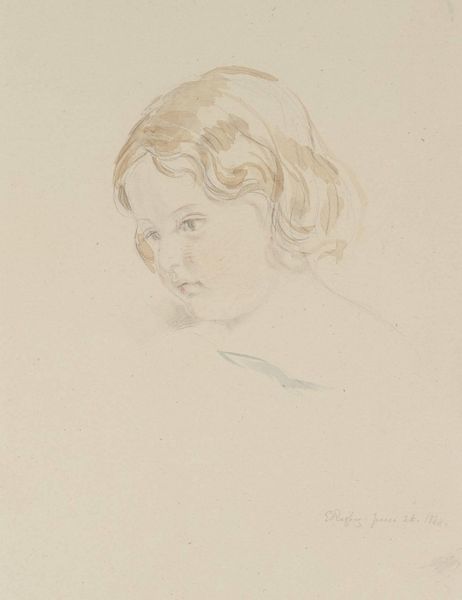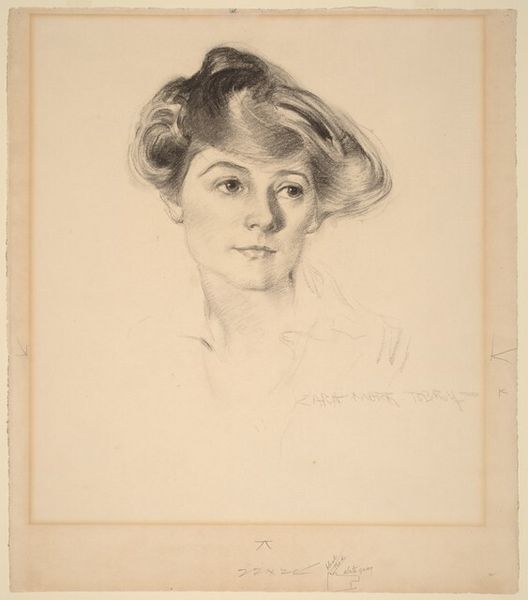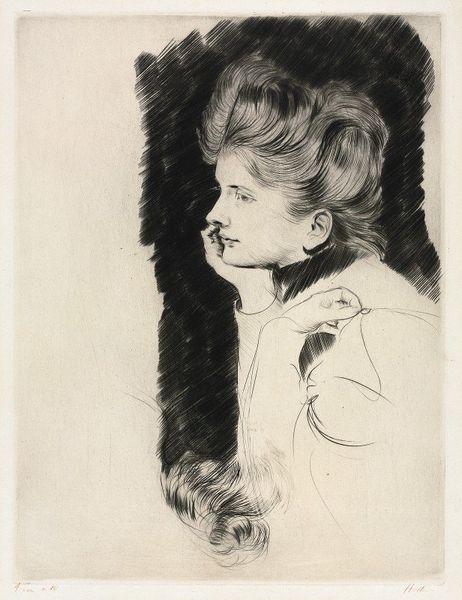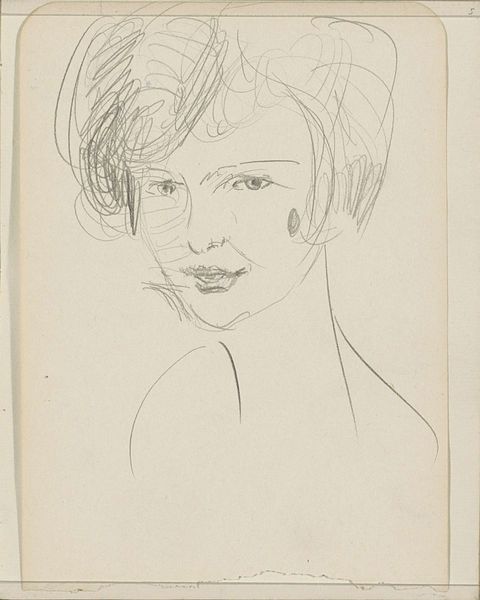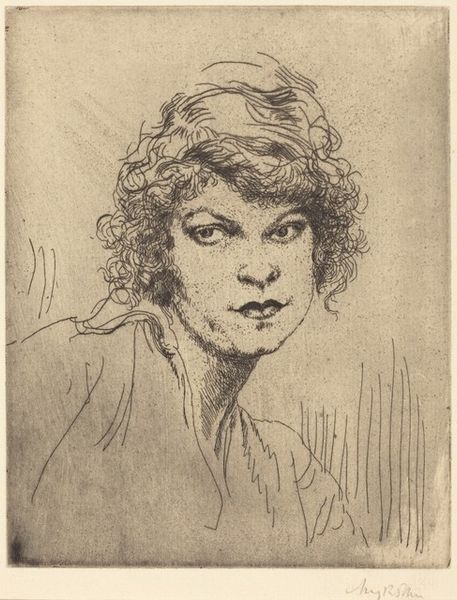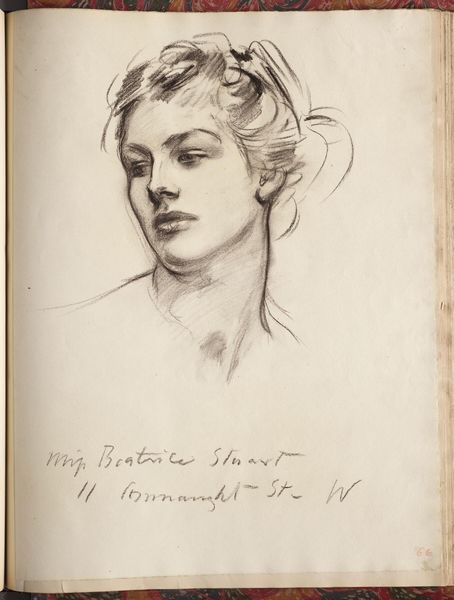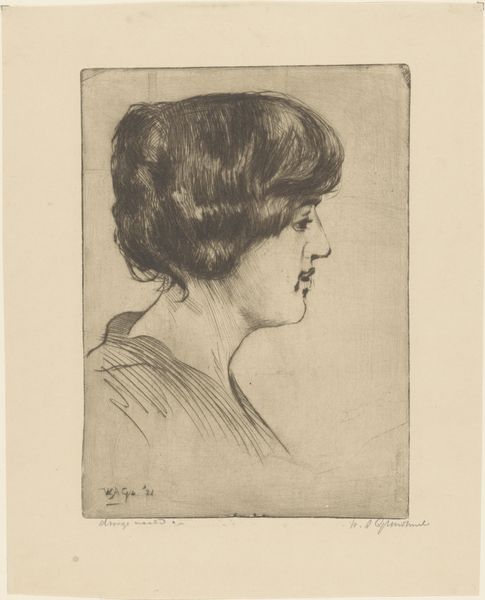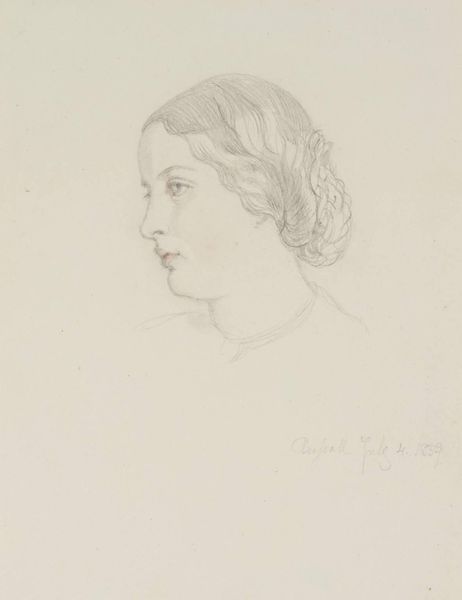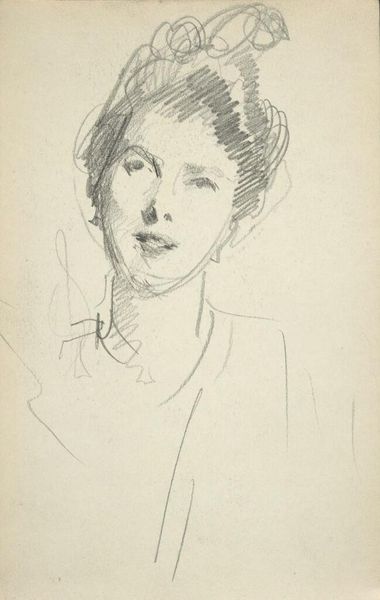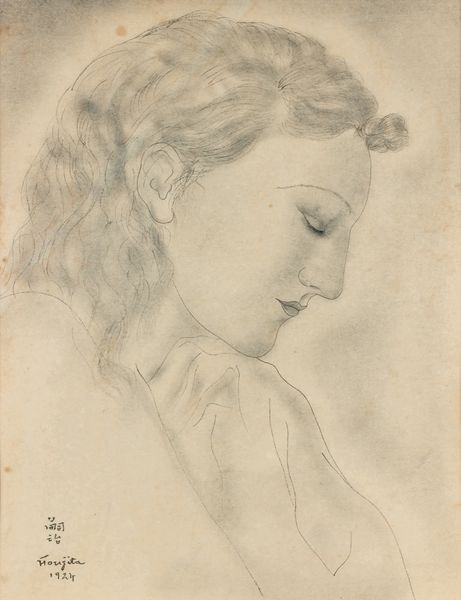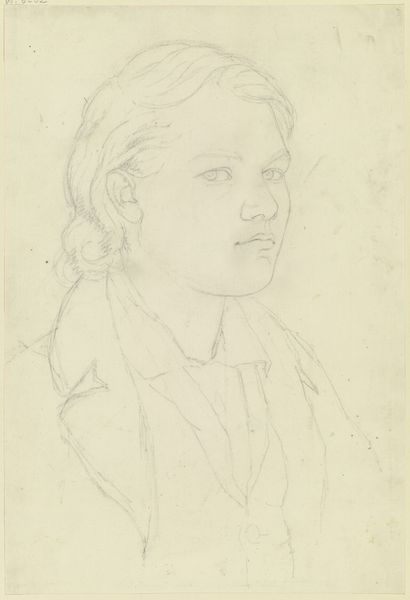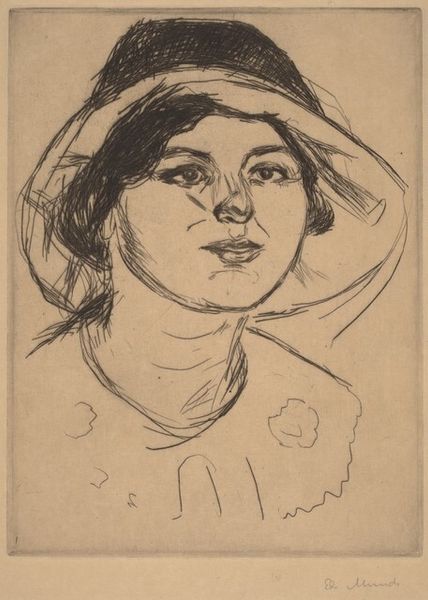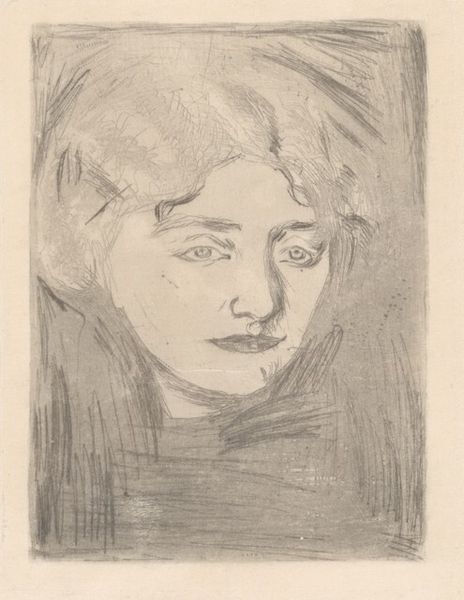
drawing, pencil
#
portrait
#
drawing
#
pencil drawing
#
pencil
#
portrait drawing
#
academic-art
#
realism
Dimensions: overall (approximate): 36.5 x 26.3 cm (14 3/8 x 10 3/8 in.)
Copyright: National Gallery of Art: CC0 1.0
Curator: Before us, we have "Study of Head" by Gerald Leslie Brockhurst, a striking pencil drawing. The piece exemplifies Brockhurst's technical skill within the academic tradition. What strikes you most when you first encounter this image? Editor: The cool reserve, I think. It is an image that, technically accomplished as it is, still feels emotionally quite remote and very controlled. It begs the question, who was this woman, and how does Brockhurst's presentation of her speak to ideals of beauty or status in his time? Curator: The precision definitely stands out. Brockhurst was known for his meticulous technique, which he likely honed during his early training at the Royal Academy Schools. His portraits often walk a fine line between objective representation and idealized form. It will be interesting to discover who the model was. Editor: Absolutely. Knowing something of the sitter would bring this drawing into much sharper focus. The details she does reveal are fascinating: her elegant string necklace, the subtle blush on her cheeks. These suggest a degree of privilege. Yet the drawing feels somehow unfinished, which creates an intriguing tension. Why present such a refined subject in an incomplete form? Curator: The "unfinished" quality, as you pointed out, makes me think of the work as a study, allowing for an investigation into Brockhurst's process and what exactly he wanted to accomplish with his drawings. Perhaps the incomplete background directs all of the viewer’s attention to her face, making this more about capturing the ideal beauty in facial features than presenting a complete, socially contextualized portrait. It certainly resonates with his tendency towards idealized representations of women. Editor: That tension you point to – between the real and the ideal – is so interesting here, precisely because, as a drawing, it implies both a kind of intimacy between artist and sitter, and also, in its lack of a traditional setting, a potential universality. It makes you wonder what was expected from female subjects in the art world and whether Brockhurst was challenging those expectations by allowing such clear "process" to remain visible. Curator: This is precisely where examining the historical context becomes valuable. Brockhurst came into prominence during an era grappling with evolving notions of femininity, especially with women becoming increasingly active outside the home. "Study of Head," in this light, potentially contributes to an ongoing visual dialogue, depicting a sophisticated, self-possessed, modern woman who seems caught between tradition and modernity. Editor: It gives us a moment to reflect on the expectations placed on women – both within art and without – and the powerful ways that artists both reflect and subvert those expectations. And for that, Brockhurst's piece really lingers in the mind. Curator: It does invite one to keep considering, questioning what exactly is the statement he attempts to deliver, which in turn prompts one to re-examine and perhaps reinterpret how we are defining portraiture to this very day.
Comments
No comments
Be the first to comment and join the conversation on the ultimate creative platform.
